|
By Raechel Bonomo Growing up, I hated my hair colour. I was teased relentlessly, often wishing I was more like my light-haired classmates and the kids lucky enough to be born brunettes. My mother would tell me how fortunate I was to be different, but as a kid the last thing you want is to stand out from the crowd. As soon as I entered high school, I hit the salon, dying my hair dark and as far away from my natural red as possible. There was nothing I wanted more than to be like everyone else, until I realized (as my mother predicted) that being a redhead was my birthright — one that I eventually swam back to. According to studies, redheads are a dwindling breed, and we might have climate change to blame for it. But we’re not the only ginger species fearing extinction due, in part, to a warming environment. Copper redhorse is a freshwater fish that lives in shallow grass-beds in the St. Lawrence River. Unlike red-haired humans around the world, and with the highest concentration found in Scotland and Ireland, the copper redhorse is endemic to Canada and found nowhere else on the planet. The species’ population size is uncertain, but scientists estimate that only a few hundred individuals remain in Canadian waters. The Committee on the Status of Endangered Wildlife in Canada, the IUCN Red List and the Species at Risk Act list copper redhorse as endangered. The fish is vulnerable to habitat fragmentation and loss, pollution and invasive species. The species also tends to spawn later in the season, making its newly hatched young susceptible to lower water levels. Studies carried out since the early 1990s show that the copper redhorse's natural reproduction cycle is often disrupted due to pollution from agricultural and urban runoff. The copper redhorse is the largest sub-species of redhorse in Quebec and it also lives the longest, averaging around 30 years of age in the wild. This resilient copper fish also has quite the bite. It feeds mainly on snails and has robust teeth to chomp through the shells of its prey. Much like my mother, organizations and governments see the value in protecting redheaded species. The Nature Conservancy of Canada (NCC) works to protect habitat for this species by conserving the islands and surrounding waters it is known to inhabit. NCC also protects 15 kilometres of riverbed in the Richelieu River and Île Jeannotte and Île aux Cerfs archipelago, which together equal more than 70 acres (30 hectares) of important habitat for young copper redhorse. NCC actively works with the Ministry of Sustainable Development, Environment and Parks in Quebec to keep this species safe. To remedy the habitat loss, NCC launched a campaign in 2006 to naturalize the riverbanks along the Richelieu River. The campaign, which involves numerous stewardship projects to keep waters clean for the species, still runs strong to this day. It’s time to see the value of redheads, both those walking on land and those swimming in water. I’ve finally come into my own as a redhead and wear the ginger title proudly. I stand united with this copper fish as a redhead and a conservationist, forming a bond with this species no bottle of dye could ever conceal. This blog was also posted on the Nature Conservancy of Canada's Land Lines blog
0 Comments
By Raechel Bonomo My favourite holiday memory is learning to make mashed potatoes in my grandma’s kitchen. Her hand gently clasping mine as I firmly squished down into a large yellow bowl using an old wooden-handled masher. I recall the way she recited the intricate family recipe. It is laced with table cream, a pinch of salt and the secret ingredient that has kept the mashed creation a must-have on our holiday table. Learning how to make these potatoes felt like an initiation of sorts. It was one almost every female member of my family has gone through. No holiday meal is truly complete without this dish. Carefully prepared meals are often a quintessential part of the holidays. More than that, food structures human lives into three parts: breakfast, lunch and dinner. There are copious articles telling us what we should and shouldn’t eat, the newest recipes to try and what foods to eat to lose weight. But what if eating was as simple as consuming whatever happened to swim by? Oh, to live like a fish. Although our finned friends are as dependent on food as humans are, they’re not nearly as picky. What a fish consumes boils down to their species, size and region. Larger fish, such as the anadromous salmon, tend to munch on smaller saltwater species like herring, who in turn opt for zooplankton and krill. While other large freshwater fish such as trout will snack primarily on insects and smaller fish, sometimes what a fish eats is simply what it can fit in its mouth. Largemouth Bass have been known to consume an interesting array of things, ranging from the typical crayfish to the odd small bird or two. This species is known to eat frogs, leeches, snakes and even small mammals. Food availability and competition in an area also play a role in what a species may eat. Habitat degradation and pollution can negatively impact what’s on the menu. It often altering aquatic "food webs" by forcing species to opt for different food sources. With the introduction of invasive species such as Round Goby in many watersheds across Canada, sometimes getting a sufficient bite to eat is harder than simply chomping down on whatever floats a fish’s way. Round Goby compete directly with other bottom-dwelling fish.,They not only eating similar prey but sometimes even preying on smaller fish, such as darters and logperch. By reducing the availability of food for native species, Round Goby over-populate areas by dwindling the numbers of species, including Northern Madtom and Eastern Sand Darter. Gobies will also intrude into the nests of native species and snack on their eggs. This prevents any offspring from hatching, impacting the life cycle of a native species and contributes to the decrease in population. In the wake of the growing number of invasive species like the Round Goby, food has never been more important to native species. Fish need this sustenance for their development so they can reproduce, which helps keep populations of native species afloat. Food plays an important part in every species’ life. From humans to fish, from a bowl of creamy mashed potatoes to a school of plankton. Food is the one thing we can all sink our teeth into.
|
ELB MembersBlogs are written by ELB members who want to share their stories about Ontario's biodiversity. Archives
January 2023
Categories
All
|

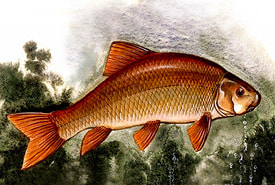
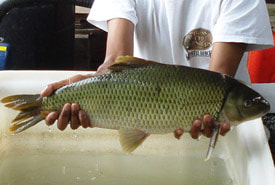
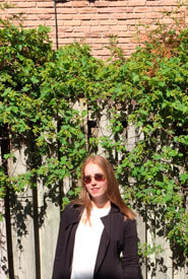
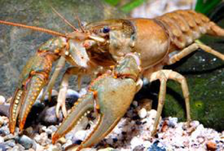
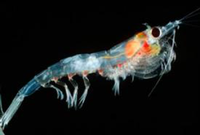

 RSS Feed
RSS Feed